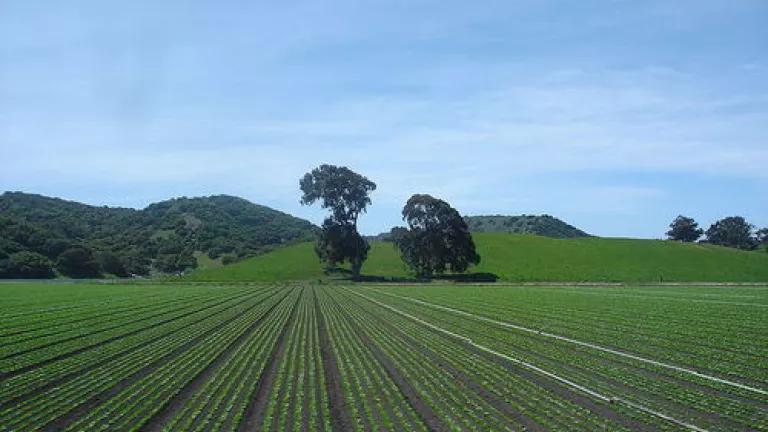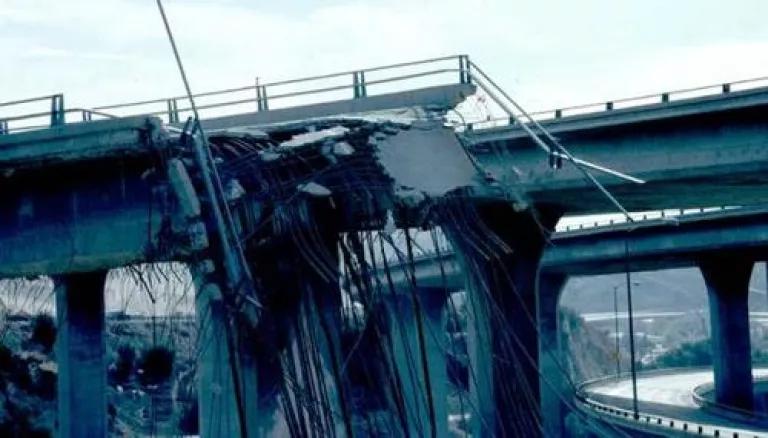
California is home to the popular-for-rafting Kern River, Big Sur sunsets, the endangered blunt-nosed leopard lizard, some of the world’s most important blue whale foraging habitat, strawberry valleys, rolling farms, cowboy towns, and big bustling cities. All of this is put at risk from the heavy industrial oil and gas extraction process called fracking.
Farmland in the Salinas Valley
Today, Gov. Jerry Brown declared a drought emergency in California and asked everyone to cut back 20 percent of their water use. Yesterday, NRDC with a coalition of environmental groups called on the California Division of Oil, Gas & Geothermal Resources (DOGGR) to consider an alternative to continued well stimulation – including fracking – within the state. We submitted comments on the agency’s notice of preparation of an Environmental Impact Report (EIR) that asked the agency to consider a moratorium on fracking in California while the state studies the risks of the controversial process to public health, the environment, and our water. We also asked DOGGR to consider a prohibition on well stimulation in or near sensitive areas including, among others, wetlands, stressed watersheds and aquifers, Native American cultural sites, air basins in non-attainment areas, urban areas, and terrestrial or marine habitat for threatened or endangered species.
DOGGR is required to prepare an EIR by recently passed Senate Bill 4. The EIR must analyze the potential direct, indirect, and cumulative environmental impacts of statewide well stimulation. The EIR must also consider reasonable alternatives to well stimulation and possible mitigation measures. We want to ensure that EIR is honest, comprehensive, and not afraid to face the facts about the potential environmental impacts of statewide fracking.
The fact is that fracking is a water intensive process that can use over a million gallons of water per well, and fracking has been linked to groundwater and surface water contamination. Last year was the driest in 119 years of records, and we are in what Gov. Jerry Brown himself is calling a “mega drought” and “perhaps the worst drought California has ever seen since records began being kept about 100 years ago.” The fact is that fracking and its related activities have been associated with induced earthquakes. And, today marks the 20-year anniversary of the Northridge earthquake that killed 57 people and injured an estimated 5,000 more. The fact is that flaring, venting, leaking, and release of contaminants throughout the production, processing, transmission, and distribution of oil and gas are already significant sources of air pollution, and these emissions can include methane, a greenhouse gas with a global warming potential 84 times greater than carbon dioxide over a 20-year horizon. And, in rural areas of Kern County – a hotbed of fracking – residents already suffer from some of the highest rates of respiratory illness in the nation.

Northridge Earthquake Freeway Destruction
We asked DOGGR to consider all these environmental realities in its upcoming EIR and more.
The California Environmental Quality Act became law in 1970, and part of its legacy is that the public has an opportunity to be informed about and participate in major land use decisions in this state. Yesterday, we exercised that right to speak out, and we reminded DOGGR that it is required by CEQA to “take all action necessary to protect, rehabilitate, and enhance the environmental quality of the state” and to “provide the people of this state with clean air and water . . . .” This is no small task but we should expect no less, especially when considering inherently risky industrial activities like oil extraction.
The story of what happened in West Virginia is a chilling reminder of how earnestly we depend on our agencies to protect and provide water. Last week, an estimated seventy-five hundred gallons of crude MCMH (a chemical used to remove impurities from coal and that we know almost nothing about) spilled into West Virginia’s Elk River. More than 200,000 people were told not to drink, shower, do their dishes, or cook with their water. Businesses shut down, schools closed, everything stopped. There was a run on paper plates and plastic forks, and people had to drive miles to find a place to wash themselves. Industrial activities, no matter how “high-tech” they proclaim to be are still run by humans. Humans make mistakes. It is in this real world that we ask DOGGR to consider the risk of forging ahead and fracking away. Once the fracking fluid is spilled, you can’t unspill it.
Photo Credit: BrendelSignature at en.wikipedia and the U.S. Department of Transportation, respectively

